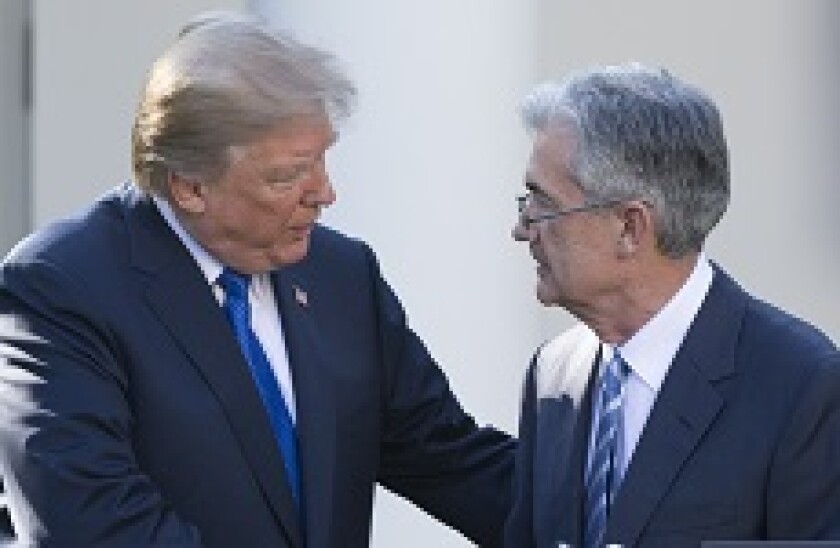Sitting US presidents rarely publicly criticise the Fed, or its chair, but nearly all have done so in private — Trump is following a well trodden presidential path.
Before taking office in 1993, Bill Clinton was reportedly worried about rising interest rates.
Leon Panetta, Clinton’s budget director and future chief of staff, fired a shot across the bow of the central bank.
According to a New Times article published just before Clinton's inauguration Panetta told Congress that if the Federal Reserve was to raise interest rates, thereby slowing US growth, it would be ‘very tough’ for the incoming administration to undertake the budget deficit reduction targets the Fed had been urging it to undertake.
In fact, Alan Greenspan, the Federal Reserve chair who served under four presidents including Clinton, told US network CNBC in October that he had received “innumerable” notes and requests from politicians to lower interest rates during his time in office.
Greenspan’s predecessor Paul Volcker revealed an even more egregious example of Fed interference, in a book titled “Keeping at it: The quest for sound money and good government”.
In Volcker’s account, published last October, the former central bank chief recalls being invited to a meeting at the White House in 1984.
The meeting, held in the president’s library, was with Ronald Reagan and the White House chief of staff James Baker.
Volcker claims that during the meeting Baker told him that Reagan was “ordering” him not to raise interest rates before the next election.
“I was stunned,” Volcker wrote. “Not only was the president clearly overstepping his authority by giving an order to the Fed but it was disconcerting because I wasn’t planning tighter monetary policy at the time.”
Volcker recounts that he walked out without responding.
“I later surmised that the library location had been chosen because, unlike the Oval Office, it probably lacked a taping system,” he continued. “The meeting would go unrecorded.”
Perhaps the president to meddle most frequently in the affairs of the US federal reserve was Richard Nixon.
Expansive evidence for Nixon’s Fed meddling also exists primarily because of the conspiratorially minded president’s fixation with taping most of his conversations.
In many of his conversations with then-Fed chair Arthur Burns, detailed in a paper by University of Delaware Professor Burton Abrams in a paper for the Journal of Economic Perspectives, Nixon is both implicit and explicit in pressuring the Fed chair to maintain expansive monetary policy.
Other conversations with aides details Nixon’s attempts to influence Burns and to pressure him to keep rates as low as possible.
All these incidents came after the Fed was made supposedly independent in 1951, after another conflict between the Fed and the executive. The standoff led to the Treasury-Fed Accord, freeing monetary policy from the borrowing needs of the US Treasury.
While choosing to air the criticism in public may be considered another example of the president being irresponsible, Trump is far from the first US chief executive to try to pressure the Federal Reserve over rate hikes and likely will not be the last.
Fed chair Jay Powell, who Trump appointed to the Fed last year, is also unlikely to listen too much to political griping and has said he will not resign if Trump asks him to.
Trump could technically fire Powell as a Fed governor for ‘cause’, which would be the most important breach of Fed independence in US history.
But the process is tricky, unprecedented and even the president has no power to actually remove Powell from his role as chairman of the FOMC.
Trump will likely continue to carp on about rising interest rates but unless he crosses what still appears to be an impassable red line, he is simply repeating the strategy of his predecessors — but in ugly public format.

